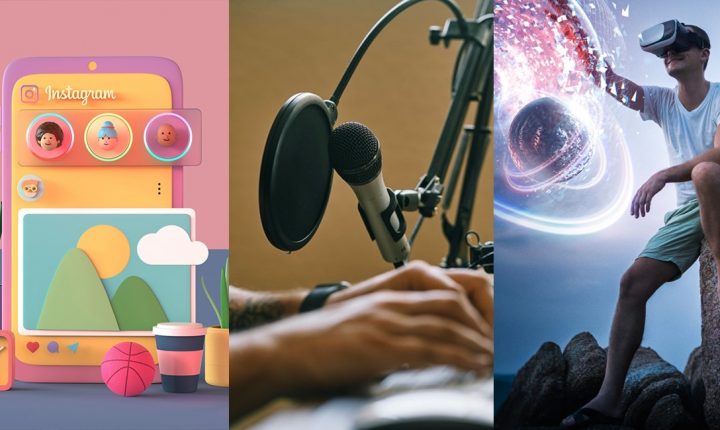
Communication trends in 2021: more collaboration, awareness and digital acceleration
Communication agency Omnicom PR Group lists the most important communication trends of 2021. From reputation management to public affairs.
November 25, 2021

With the current year coming to a close and 2022 year plans in development, it’s the perfect moment to seek inspiration and guidance when it comes to social media & digital innovations. Social media platforms remain the #1 most visited type of website (followed by messaging and search) and continue to be absolutely essential for brands to implement effectively in order to reach and engage with their audiences.
The Social Digital & Innovation specialists at Omnicom PR Group looked back on 2021 and forward to 2022 and shortlisted the 5 most impactful trends to leverage next year in your communication strategy:
After years of implementation across almost multiple platforms, ephemeral content formats are now starting to “disappear” themselves. Originally created by Snapchat and replicated by Instagram, ephemeral content is typically seen in the form of stories but refers to any content that is online for 24 hours and then disappears. Facebook and YouTube followed suite with the launch of stories but has seen less success. LinkedIn and Twitter also briefly tested a stories format this past year but recently discontinued the function due to lack of use. Another app that became hugely popular in a short time is Clubhouse. Clubhouse originally featured ephemeral only audio chats, although now audio is recordable and available for replay.
How to leverage it in 2022?
Podcasts started back in 2004, but they’ve never been so trendy! Following years of the growing success of video content with “sound off” and “as short as possible” features, this comeback may seem quite counterintuitive. However, the pandemic has given the popularity of audio formats a huge push. As mentioned, 2020 and 2021 saw the rapid rise of the app Clubhouse and its audio chats (private and public) have since been copied by a number of bigger, richer platforms such as Facebook, Instagram, Twitter and even Spotify. The big advantage is that audio content is less complex and easier to produce and, unlike video content, it can be recorded remotely and is typically more affordable.
How to leverage it in 2022?
“Advertainment” is over. Worldwide we are facing serious challenges like the acceleration of global warming and the rise of discrimination. Consumers expect companies to talk less and act more … and then talk about what they’re actually doing. This is why companies are (re)defining their brand purpose, their role and ambition in this world, and starting to promote it more prominently, especially on social media.
Consumers want authenticity and real, tangible and emotional connections with brands. Gone are the days of picture perfect marketing. Gen-Z, in particular, is fighting hard to change the world with a long list of social and environmental concerns. They follow and engage with brands which align with their values. Creating a brand purpose is not a one-time event or campaign. Your purpose must be interwoven in everything you do and must evolve across months and years, but it’s never too late to start!
How to leverage it in 2022?
Influencers are taking back their independence by becoming entrepreneurs (and vice versa). In addition to creating their own brands and products, they are also stepping away from their “dependence” on social platforms and its ever-changing algorithms and rules by creating their own platforms and services. Many influencers use a subscription model where their followers have to pay to access premium content. This allows them to reach a very engaged audience via a social platform and really communicate with each other (app or service) for a stronger, deeper connection with a smaller, core audience that main platforms can’t provide.
How to leverage it in 2022?
This is a question which we don’t (yet) have the answer to. Invented by Neal Stephenson in his 1992 novel “Snow Crash” and recently boosted by Facebook’s name change to “Meta”, the metaverse refers to a fully immersive, computer generated “3D virtual world inhabited by avatars of real people”. The very first metaverses were open and virtual world video games such as Fortnite, Minecraft, Roblox and Second Life. The metaverse isn’t a single product or one company, but just like the internet, includes different companies building different pieces of a larger, interconnected metaverse.
How to leverage it in 2022?
Which trend or trends will you leverage next year? Want to know more about implementing these trends for real brand impact? Reach out to the Social, Digital & Innovation team at Omnicom PR Group.

Communication agency Omnicom PR Group lists the most important communication trends of 2021. From reputation management to public affairs.

Which social media apps are new, which have grown and which offer new features?